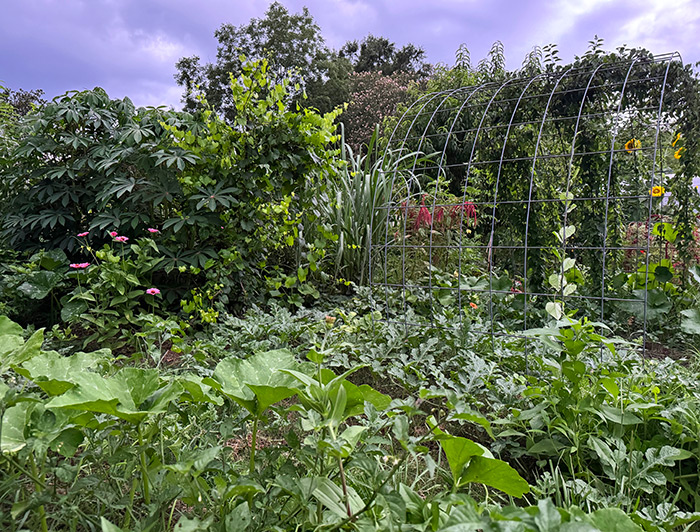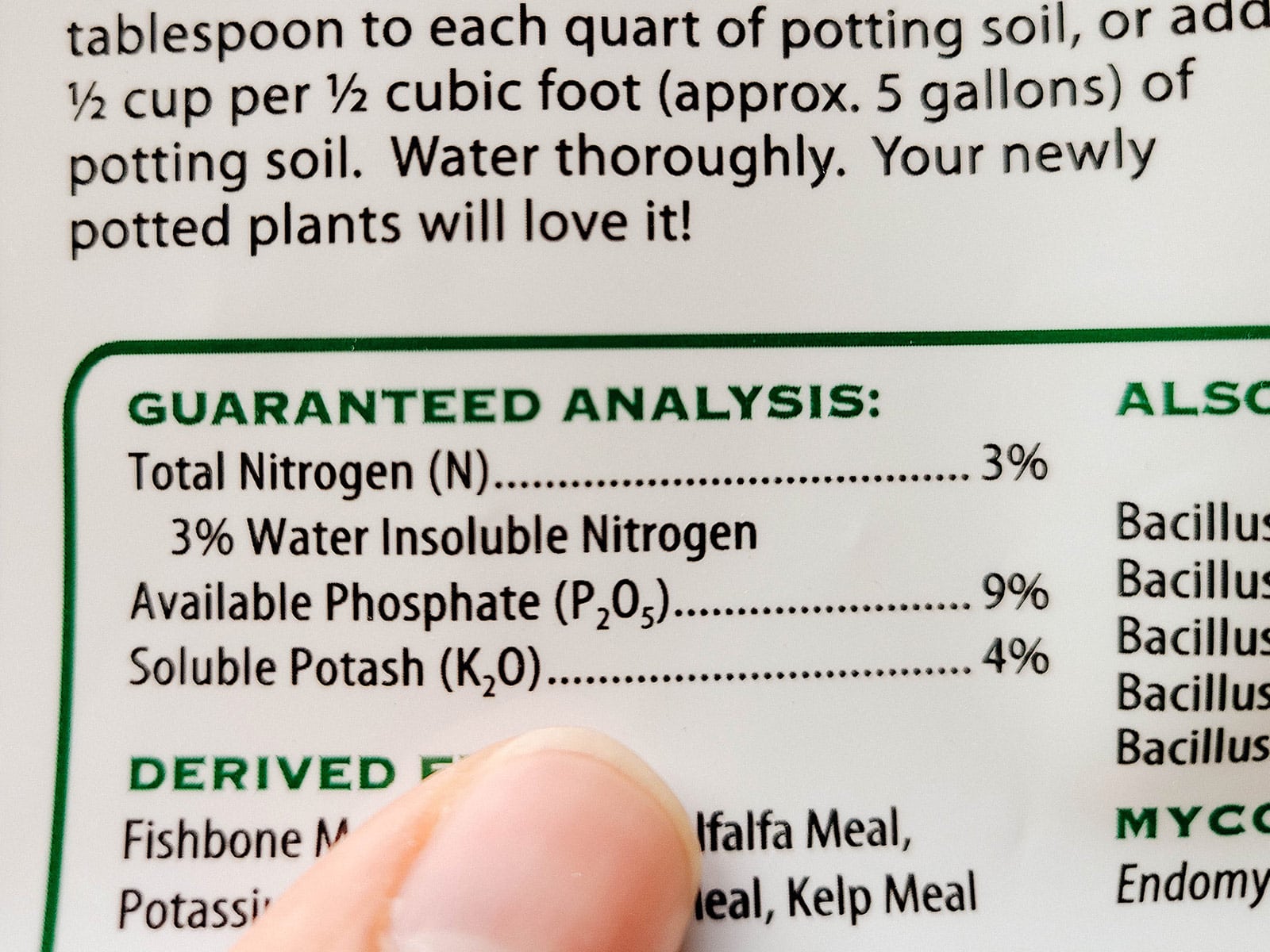This plant list shares native plant species from the Southern Great Lakes Region in Canada and the United States that can be propagated by stem cuttings.
For a detailed tutorial, see how to take softwood cuttings.

Growing Native Plant Stem Cuttings

There are several ways to add native plants to your garden (seeds, cuttings, division, transplants) and each method has advantages.

This list shares species you can root from stem cuttings.
My primary source for this list is the book, The Gardener’s Guide to Native Plants of the Southern Great Lakes Region by Rick Gray and Shaun Booth.
The process for growing from stem cuttings is the same for native and non-native plants.
While each gardener has their own preferences, this is a general overview:
A piece of plant stem is placed in moist growing medium to encourage new root growth.
Once roots have formed, the new plant can be transplanted into the garden.
If you would like to grab a copy of the plant list or get tips for taking cuttings, see the Resources section.
Native Plant List for Cuttings
This list includes —as researchers can best determine at this time—plants deemed native to various parts of the Southern Great Lakes Region in Canada and the United States.
The whole topic of what is a native plant is complex and interesting and I’d encourage you to dive into the research and learn more.
Ultimately what matters is how the plants we choose to grow today in our own gardens support our local ecosystems and the co-dependent relationships between plants and animals.
I’ve also listed butterflies and moths that rely on these plants to nourish their larvae. It’s quite exciting to grow these plants and witness the benefits.
Before choosing any plants for your garden, check local ecological and conservation resources to confirm they are suited to your growing conditions and are not considered too aggressive or invasive.
Save a copy of this plant list
1 Anaphalis margaritacea ~ Pearly Everlasting (USDA Hardiness zones 2-7)
Larvae host plant for:
- Butterflies: American Lady (Vanessa virginiensis), Painted Lady (Vanessa cardui)
- Moths: Everlasting Tebenna Moth (Tebenna gnaphaliella)
2 Antennaria parlinii ~ Parlin’s Pussytoes (USDA Hardiness zones 5-9)
Larvae host plant for:
- Butterflies: American Lady (Vanessa virginiensis)
- Moths: Everlasting Tebenna Moth (Tebenna gnaphaliella)
3 Asarum canadense ~ Wild Ginger (USDA Hardiness zones 3-7)
Larvae host plant for:
- Butterflies: Pipevine Swallowtail (Battus philenor)
- Moths: none
4 Campanula rotundifolia ~ Harebell (USDA Hardiness zones 3-6)
Larvae host plant for:
- Butterflies: none
- Moths: none
5 Chelone glabra ~ White Turtlehead (USDA Hardiness zones 3-8)
Larvae host plant for:
- Butterflies: Baltimore Checkerspot (Euphydryas phaeton)
- Moths: Pink-patched Looper (Eosphoropteryx thyatyroides), Turtlehead Borer Moth (Papaipema nepheleptena), Verbena Bud Moth (Endothenia hebesana),
6 Eupatorium perfoliatum ~ Boneset (USDA Hardiness zones (3-8)
Larvae host plant for:
- Butterflies: none
- Moths: Blackberry Looper Moth (Chlorochlamys chloroleucaraia), Burdock Borer Moth (Papaipema cataphracta),Clymene Moth (Haploa clymene), Lined Ruby Tiger Moth (Phragmatobia lineata), Morning Glory Plume Moth (Emmelina mondactyla),
7 Eurybia macrophylla ~ Large Leaf Aster (USDA Hardiness zones 3-7)
Larvae host plant for:
- Butterflies: Pearl Crescent (Phyciodes tharos), Silvery Checkerspot (Chlosyne nyctei)
- Moths: Aster Borer Moth (Carmenta corni), Asteroid Moth (Cucullia asteroides), Arcigera Flower Moth (Schinia arcigera)
8 Eutrochium maculatum ~ Spotted Joe Pye Weed (USDA Hardiness zones 2-9)
Larvae host plant for:
- Butterflies: none
- Moths: Eupatorium Borer Moth (Carmenta bassiformis), Common Pug (Eupithecia miserulata), Ruby Tiger Moth (Phragmatobia fuliginosa), Three-lined Flower Moth (Schinia trifascia)
9 Geum triflorum ~ Prairie Smoke (USDA Hardiness zones 3-7)
Larvae host plants for:
- Butterflies: none
- Moths: Tinagma obscurofasciella
10 Solidago caesia ~ Blue-stemmed Goldenrod (USDA Hardiness zones 4-8)
11 Solidago nemoralis ~ Gray Goldenrod (USDA Hardiness zones 2-9)
12 Solidago rugosa ~ Rough-stemmed Goldenrod (USDA Hardiness zones 4-9)
Larvae host plants for:
- Butterflies: none
- Moths: 45 species according to The Gardener’s Guide to Native Plants of the Southern Great Lakes Region
13 Symphyotrichum cordifolium ~ Blue Wood Aster (USDA Hardiness zones 3-9)
14 Symphyotrichum novae-angliae ~ New England Aster (USDA Hardiness zones 3-8)
15 Symphyotrichum oolentangiense ~ Blue Sky Aster (USDA Hardiness zones 3-8)
16 Symphyotrichum pilosum ~ Frost Aster (USDA Hardiness zones 3-9)
Larvae host plants for:
- Butterflies: Northern Crescent (Phyciodes cocyta), Painted Lady (Vanessa cardui), Pearl Crescent (Phyciodes tharos), Silvery Checkerspot (Chlosyne nyctei), Tawny Crescent (Phyciodes batesi)
- Moths: 40 species according to The Gardener’s Guide to Native Plants of the Southern Great Lakes Region
17 Tradescantia ohiensis ~ Ohio Spiderwort (USDA Hardiness zones 4-9)
18 Tradescantia virginiana ~ Virginia Spiderwort (USDA Hardiness zones 4-9)
Larvae host plant for:
- Butterflies: none
- Moths: none
19 Verbena hastata ~ Blue Vervain (USDA Hardiness zones 3-8)
Larvae host plant for:
- Butterflies: Common Buckeye (Junonia coenia)
- Moths: Sparganothis Leafroller Moth (Sparganothis sulfureana), Turtlehead Borer Moth (Papaipema nepheleptena), Verbena Bud Moth (Endothenia hebesana), Verbena Moth (Crambodes talidiformis)
20 Vernonia missurica ~ Missouri Ironweed (USDA Hardiness zones 4-9)
Larvae host plant for:
- Butterflies: American Lady (Vanessa virginiensis), Painted Lady (Vanessa cardui), Crossline Skpper (Polites origenes)
- Moths: Ironweed Borer Moth (Papaipema cerussata), Ironweed Moth (Polygrammodes langdonalis), Ironweed Root Moth (Polygrammodes flavidalis), Parthenice Tiger Moth (Grammia parthenice), Red Groundling (Perigea xanthioides), Ruby Tiger Moth (Phragmatobia fuliginosa),
21 Veronicastrum virginicum ~ Culver’s Root (USDA Hardiness zones 3-8)
Larvae host plant for:
- Butterflies: none
- Moths: Culver’s Root Borer Moth (Papaipema sciata)
Resources
Empress of Dirt
Native Plants to Grow From Stem Cuttings

To save the file, please provide your email address for this purpose only.
We do not spam.
How to Root Stem Cuttings
- It’s best to take cuttings when the plant is actively growing but not yet budding or blooming. Some cuttings will still root at other times, but this is the most reliable time.
- Choose a stem with at least 3 leaf sets and cut (remove from living plant) below the lowest leaves.
- Depending on the plant, your stem cutting might be between 3 to 8-inches long.
- Remove the lowest set of leaves—this is where the new roots will form. This means this section of the stem must be placed below the surface of your growing medium.
- If the stem is young and tender, you can root it directly in moist potting mix or a combination of moist vermiculite and sand in a container with drainage holes.
- If it’s later in the growing season, tougher stems can benefit from rooting hormone.
- Place in light location but avoid direct sun and heat. This could be near a windowsill in your house or outdoors in a sheltered location. You don’t want the rain or wind messing with your cuttings.
- Keep watered.
Depending on the plant, roots may from in weeks or a few months. How can you tell? You might see them. Or, by giving a gentle tug on the stem, you’ll feel it is anchored to the growing medium by its new roots. You might also notice new stem or leaf growth up top.
When roots are well established (an inch or longer is a good guideline), you can transplant your new plants to your garden either in the ground or in pots.
Be sure to choose a location that suits sun, soil, and water needs.
More Detailed Tutorials
Each of these tutorials shows the same basic process.
Eco-Beneficial Gardening Books
I recommend these books because they get gardeners excited about ecological gardening and the incredible relationships between plants and animals. Our future is in our hands!
1 The Pollinator Victory Garden | Kim Eierman | Win the War on Pollinator Decline with Ecological Gardening; Attract and Support Bees, Beetles, Butterflies, Bats, and Other Pollinators
2 A Garden for the Rusty-Patched Bumblebee: Creating Habitat for Native Pollinators: Ontario and Great Lakes Edition | Lorraine Johnson, Sheila Colla | All the information gardeners need to take action to support and protect pollinators, by creating habitat in yards and community spaces, on balconies and boulevards, everywhere!
3 The Gardener’s Guide to Native Plants of the Southern Great Lakes Region | Rick Gray and Shaun Booth | Distills all the information essential for growing 150 species of garden-worthy native plants into a single, at-a-glance guide.
4 Bringing Nature Home: How You Can Sustain Wildlife with Native Plants | Doug Tallamy
5 Garden Allies: The Insects, Birds, & Other Animals that Keep Your Garden Beautiful and Thriving | Frederique Lavoipierre
6 The Humane Gardener: Nurturing a Backyard Habitat for Wildlife (How to Create a Sustainable and Ethical Garden that Promotes Native Wildlife, Plants, and Biodiversity) | Nancy Lawson
Growing Native Plants From Seed
~Melissa the Empress of Dirt ♛





